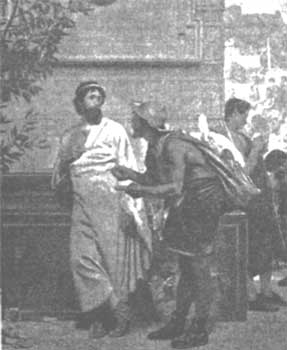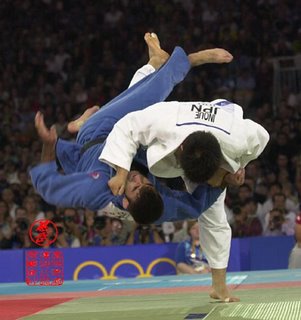
1.) He was present at the Battle of Marathon. Aristides led his tribe of to Marathon to fight some Persian invaders. Then he stood guard over the battlefield as the rest of the Athenians quick-marched back to Athens ready to fight the Persians as they attempted a landing near Athens.
2.) He was present at the naval Battle of Salamis, and helped galvanize the Greeks against the Persians during their second invasion attempt. He even worked together with one of his most hated rivals Themistocles, to secure a major naval victory against the Persians.
3.) He was present at the Battle of Plataea. Working together with Greek allies, Aristides led a contingent of 8,000 Athenians against another large Persian force, defeated them and secured Greece's autonomy for at least a while.
4.) Aristides was also responsible for the allocation of the treasury of the Delian League, which was to be a force set up to repel any future Persian invasions. No one else was believed to be as equitable as Aristides, and that's why it became his sole responsibility. The Delian League of the future would come to be the funds for the future Athenian sea empire (Reminds me of the Romulan Star Empire).

Athenian sea empire

Romulan Star Empire
These are some of the most important events in the history of the Classical Greeks. He was present at all them!
Probably one of my favorite stories about Aristides is this one though:
In Athens, there was a custom that was enacted to ensure that in the democracy there could be no single man who could hold more power than anyone else. There would be a vote in the Athenian assembly every year to exile a citizen whose powers had grown too great, 6000 votes were necessary to exile any citizen and after it had passed the exiled citizen would be unable to return to Athens for 10 years under penalty of death.
You can see how this could be abused, you and 6000 of your buddies don't like someone, and that guy gets banished for 10 years. If only that could still be done today... I'm looking at you Lady Gaga.

Someone needs to get punched in her poker face.
So here is how the process works: As everyone gets together for the vote, pottery is broken into pieces, and the members of the assembly scratch the name of the person they want exiled onto the piece of pottery called an ostrakon (where we get the word ostracism today). The votes are tallied, and any citizen voted out of the city has 10 days to pack their stuff and move out.
As the story goes with Aristides, he was present during his own ostracism vote around 480ish BC. While they were scratching the names on the pottery, an illiterate member of the assembly came up to him and asked him to write down the name of 'Aristides' upon his ostrakon. Aristides asked the man if Aristides had wronged him in any way, the man said "No, and I do not even know him, but it irritates me to hear him called 'The Just' all the time." With that, Aristides wrote his own name on the ostrakon and was duly subjected to exile.
I think it's pretty cool that there are some extant shards of pottery left with his name on them!
Engraved: Aristides, Son of Lysimachus, Total Badass




